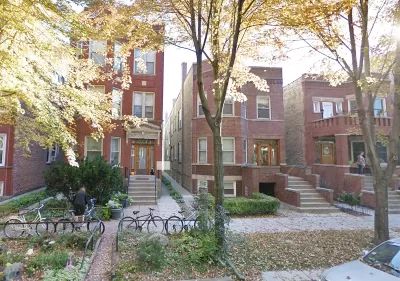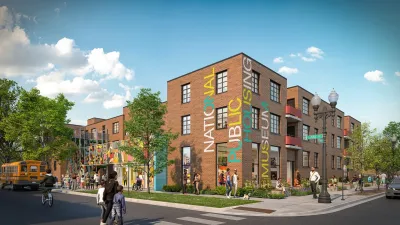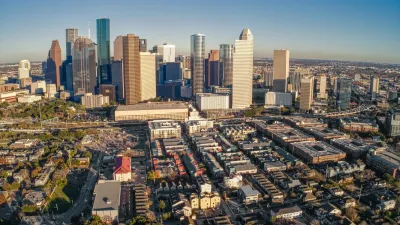One Chicago organization is working to promote the rehabilitation and maintenance of naturally occurring affordable housing, a valuable—and vulnerable—source of affordable housing units.

Hadassah Patterson, writing in Next City, reminds the reader that new construction only makes up roughly one quarter of the affordable housing market. “The rest is comprised of Naturally Occurring Affordable Housing, or NOAH, which falls between subsidized housing and high-rent buildings.” The city of Chicago, Patterson writes, lost 10 percent of its NOAH between 2012 and 2019, putting this reliable source of affordable housing in peril.
“One Chicago CDFI [community development financial institution] has been working to preserve that housing for decades. Called Community Investment Corporation (CCI), they have a wide range of programs, including their Troubled Building Initiative, to support the acquisition, rehabilitation and preservation of affordable rental housing.” That initiative, which dates back 20 years,
“is aimed at unresponsive landlords. Instead of the city of Chicago filing code violations, TBI pulls together multiple city departments including housing, police and building, to identify at-risk structures and appoint CIC as a stakeholder to make repairs.”
“CIC also brings together multiple organizations to collaborate on strategies, policies and programs to preserve affordable housing through its Preservation Compact. Preservation Compact is home to a $48 million acquisition pool for 1-4 unit buildings, and a $34 million low-cost financing fund for affordability in higher-cost markets.” The group advocated for tax relief for multifamily housing projects, “which incentivizes low- to moderate-income owners to improve buildings while keeping them affordable. This is critical to preserving more locally-owned NOAH stock as national markets face speculation from aggressive investment groups without stake in community stability. ”
FULL STORY: When Preserving Affordable Housing Is Cheaper Than Building It

Alabama: Trump Terminates Settlements for Black Communities Harmed By Raw Sewage
Trump deemed the landmark civil rights agreement “illegal DEI and environmental justice policy.”

Planetizen Federal Action Tracker
A weekly monitor of how Trump’s orders and actions are impacting planners and planning in America.

The 120 Year Old Tiny Home Villages That Sheltered San Francisco’s Earthquake Refugees
More than a century ago, San Francisco mobilized to house thousands of residents displaced by the 1906 earthquake. Could their strategy offer a model for the present?

Indy Neighborhood Group Builds Temporary Multi-Use Path
Community members, aided in part by funding from the city, repurposed a vehicle lane to create a protected bike and pedestrian path for the summer season.

Congestion Pricing Drops Holland Tunnel Delays by 65 Percent
New York City’s contentious tolling program has yielded improved traffic and roughly $100 million in revenue for the MTA.

In Both Crashes and Crime, Public Transportation is Far Safer than Driving
Contrary to popular assumptions, public transportation has far lower crash and crime rates than automobile travel. For safer communities, improve and encourage transit travel.
Urban Design for Planners 1: Software Tools
This six-course series explores essential urban design concepts using open source software and equips planners with the tools they need to participate fully in the urban design process.
Planning for Universal Design
Learn the tools for implementing Universal Design in planning regulations.
Clanton & Associates, Inc.
Jessamine County Fiscal Court
Institute for Housing and Urban Development Studies (IHS)
City of Grandview
Harvard GSD Executive Education
Toledo-Lucas County Plan Commissions
Salt Lake City
NYU Wagner Graduate School of Public Service





























